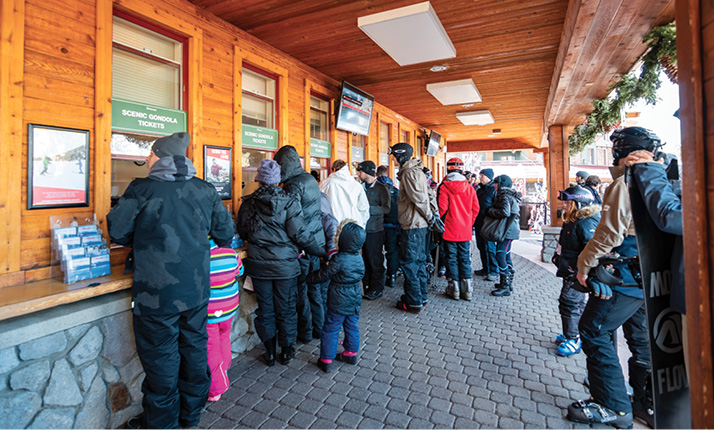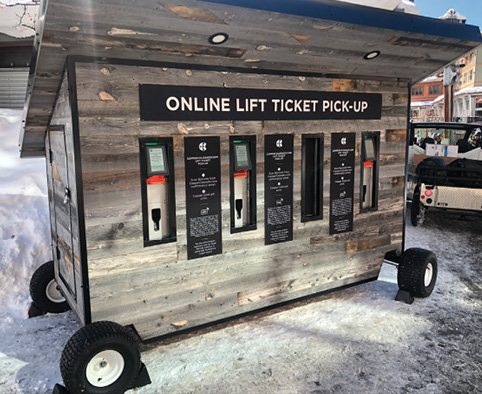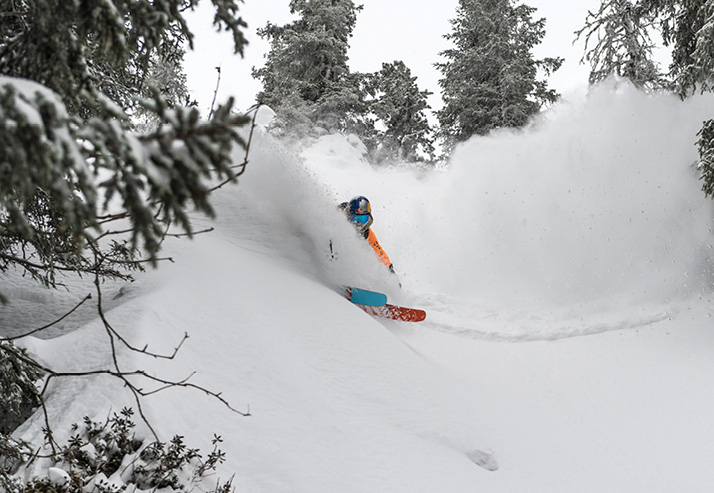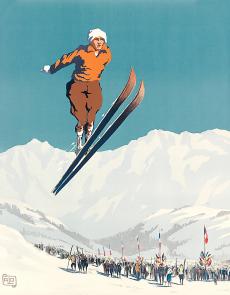
SKIING HISTORY
Editor Kathleen James
Art Director Edna Baker
Contributing Editor Greg Ditrinco
ISHA Website Editor Seth Masia
Editorial Board
Seth Masia, John Allen, Andy Bigford, John Caldwell, Jeremy Davis, Kirby Gilbert, Paul Hooge, Jeff Leich, Bob Soden, Ingrid Wicken
Founding Editors
Morten Lund, Glenn Parkinson
To preserve skiing history and to increase awareness of the sport’s heritage
ISHA Founder
Mason Beekley, 1927–2001
ISHA Board of Directors
Seth Masia, President
Wini Jones, Vice President
Jeff Blumenfeld, Vice President
John McMurtry, Vice President
Chan Morgan, Treasurer
Einar Sunde, Secretary
Richard Allen, Skip Beitzel, Michael Calderone, Christin Cooper, Art Currier, Dick Cutler, Chris Diamond, David Ingemie, Rick Moulton, Wilbur Rice, Charles Sanders, Bob Soden (Canada)
Presidential Circle
Christin Cooper, Billy Kidd, Jean-Claude Killy, Bode Miller, Doug Pfeiffer, Penny Pitou, Nancy Greene Raine
Business & Events Manager
Kathe Dillmann
P.O. Box 1064
Manchester Center VT 05255
(802) 362-1667
kathe@skiinghistory.org
Membership Services
Laurie Glover
(802) 375-1105
laurie@skiinghistory.org
Corporate Sponsorships
Peter Kirkpatrick
(541) 944-3095
peterk10950@gmail.com
Bimonthly journal and official publication of the International Skiing History Association (ISHA)
Partners: U.S. Ski and Snowboard Hall of Fame | Canadian Ski Museum and Hall of Fame
Alf Engen Ski Museum | North American Snowsports Journalists Association | Swiss Academic Ski Club
Skiing History (USPS No. 16-201, ISSN: 23293659) is published bimonthly by the International Skiing History Association, P.O. Box 1064, Manchester Center, VT 05255.
Periodicals postage paid at Manchester Center, VT and at additional mailing offices. Postmaster: Send address changes to ISHA, P.O. Box 1064, Manchester Center, VT 05255
ISHA is a 501(c)(3) public charity. EIN: 06-1347398
Written permission from the editor is required to reproduce, in any manner, the contents of Skiing History, either in full or in part.
When History Halted Skiing
Photo: The gas crisis of the early 1970s introduced skiers to gas rationing, prices tripling at the pump and gas-station lines longer than those at the ski lifts. Skiers "still came," noted a ski-resort executive. Photo: Dreamstime
A Short History of Catastrophes
When it snows, skiers ski, even amid calamity. That could change with Covid-19
Skiers and the industry have confronted and overcome a variety of disasters—wars, gas shortages, recessions, and terrorism—none of which affected the sport more than the biggest annual influencer of all: the weather. This disaster is different. The novel coronavirus already has trimmed one-sixth of the prematurely closed 2019-20 season, an estimated 8 million skier days and $2 billion in revenue, according to the National Ski Areas Association (NSAA). Travel concerns, social distancing constraints, and the cratering economy could take a much bigger bite out of the upcoming 2020-21 season. Or not.
Just prior to the modern skiing age, World War II was the obvious exception to the weather rule. Many of the 60 or so “ski areas” operating in the U.S. closed during the conflict, as did countless community rope-tow hills, with resort improvements coming to a standstill.
Stowe stayed open. With gas rationing in force, skiers commuted by train and bus, but the lifts spun just six hours a day. The sport supported the war effort in other ways. Stowe skier C. Minot “Minnie” Dole, who founded the National Ski Patrol in 1938, persuaded the U.S. State Department to create the 10th Mountain Division ski troops. At the 10th’s headquarters at Camp Hale in Leadville, Colorado, Ski Cooper was created and then opened to the public after the war.
In Idaho, Sun Valley—the country’s first true destination ski resort—was transformed into a Navy recuperating hospital, and earlier it contributed the feel-good movie Sun Valley Serenade to the effort. Filmed at the resort and starring Sonja Henie, the Norwegian Olympic ice-skating champion, the movie’s release in 1941, just prior to Peal Harbor, fit the mood of the times and provided an entertaining escape. (The ski scenes were orchestrated by Sun Valley ski-school director Otto Lang; he and Gretchen Fraser, the first U.S. skier to win an Olympic Gold Medal, [Slalom, 1948, St. Moritz] filled in for Henie and her co-star, John Payne.) The experience led Lang to shoot a training film for the 10th, whose members would create the post-war modern North American ski industry by founding dozens of resorts and driving advances in every corner of the sport.
The war wreaked havoc on European ski resorts, and led to the cancellation of the 1940 and 1944 Olympics, set for Sapporo, Japan, and Cortina d’Ampezzo in the Dolomites. FIS held an Axis-only World Championships in 1941, at Cortina, where Germany and Italy won all 18 alpine and nordic medals. The results were invalidated after the war.
The Nazis called on their citizenry to donate skis for use on the Eastern Front; an astounding 1.5 million pairs were collected, according to research by Lorenz Pfeiffer (Collected Papers of the International Ski History Congress, 2002). This was testimony both to the iron grip of National Socialism and the popularity of the sport, especially considering there must have been another few hundred thousand pairs hidden away in attics. Most of the skis sent to Werhrmacht troops were cut up for firewood. When the Olympics resumed in 1948 at St. Moritz in Switzerland, Germany was not invited. Across the globe, the modern ski era, after a five-year pause, resumed its steady ascent.
EARLY 1970s: NO GAS, NO PROBLEM
The gas crisis and recession of 1973-74 came as the nation was fully embracing this growing sport and lifestyle. With gas prices tripling and availability both random and scarce, New Jersey skiers would strap five-gallon cans of fuel to the roofs of their station wagons and pile in for the long drive north to Killington. It wasn’t even a good snow year that season, with cycles of rain and sub-zero temps. “They still came,” recalls Chris Diamond, who was starting his resort career at Killington then and whose duties included overseeing the resort’s gas station. “Skiers are resilient.”
In the pages of SKI, editor-in-chief John Fry saw upside in the re-emergence of carpooling and ski buses with a shared ski-tribe vibe, which had been disappearing as cars replaced trains and sprawling condo complexes replaced cozy ski lodges. “One of the most immediate effects of the gas crisis is that it could bring skiers closer together again,” Fry wrote. The gas crisis and the resulting shared space of skiers didn’t last. The 2020-21 season promises unprecedented social distancing, but Fry’s overall point, that skiers and the industry need to evolve and innovate in times of catastrophe, still holds true.
IT’S THE WEATHER, STUPID
The oil crisis, inflation, recession, and the Iranian Revolution of the early 1980s illustrate the over-arching importance of weather—and the industry’s response. Even with unemployment rising to near 11 percent, the 1981-82 winter was busy, setting a six-year high. It was the previous season, 1980-81, when it truly failed to snow in the West, that skiers cut their visits by more than 20 percent. It was the worst result, by far, in the 40 seasons that skier visits have been recorded by the NSAA. That weather disaster led resorts to dramatically increase their water rights and expand snowmaking capabilities, setting the foundation for today’s resort business model.
Machine gun-toting military stalked the twin Austrian villages of Saalbach-Hinterglemm during the 1991 World Alpine Championships, held in the wake of the short and indecisive first Gulf War. Eleven suspected terrorists, believed to be planning an attack in the Zel am See region, had been detained. The U.S. Ski Team first ordered its racers to return stateside from the European circuit, then flew them back for the championships. Some skiers stayed home to monitor the Gulf War on TV while a recession tightened pocketbooks. Season visitation reached a low-water mark, the poorest showing in the past three decades. But the biggest culprit in a season-to-forget was scarce snowfall on both coasts.

In 2001 and 2002, the dot-com crash and 9/11 ended what was at the time the longest period of U.S. economic expansion. Skiers and resorts feared the worst that fall of 2001, as dust settled over the collapsed Twin Towers of the World Trade Center. The owner of a New Jersey ski shop located just 20 minutes away said that 250 of his customers were lost in the attack; these were not just clients but friends, ski buddies, neighbors. He expressed what has become the mantra through all catastrophes: “I’ve been really impressed by the spirit of skiers. They are going to go skiing, no matter what.” Security was tight at the Salt Lake Olympics in February, but the fear of flying eventually lapsed, and visitations dipped only slightly.
THE GREAT RECESSION AND BEYOND

The subprime-mortgage crash and subsequent Great Recession of 2007-09 arguably had the most significant impact of any financial event, and yet the U.S. as a whole enjoyed strong, even record, years for skier visits. The traditional Wall Street high-roller vacation in Vail, with private instructors, $3,000-a-night-condos, and catered dinners, screeched to a halt. Amid job losses, bankruptcies and home foreclosures, family ski trips to the West slowed, as did international visitation. Vail Resorts, which owned just five ski resorts back then, was down 13 percent in lodging and 9 percent in lift revenues for the 2008-09 season; the latter would have been much worse if not for the newly launched Epic Pass.
The recession ultimately proved fatal for real-estate-centric Intrawest, at the time the largest ski-resort operator in North America. The condos Intrawest owned in its villages became virtually worthless on the corporate balance sheet, and the company would eventually cease to exist. (Its last remnants were snatched up in the phoenix-like creation of Alterra Mountain Company in 2018.) One lasting outcome: Most ski resorts, both large and small, exited the real-estate development market, opting instead to find development partners to take the risk. Overall, capital expansion projects were put on hold for a few seasons. Meanwhile, many smaller, low-cost, drive-to resorts flourished across the country.

Season pass sales at Mt. Snow in Vermont increased by 10 percent for the 2008-09 season, and they remained stable through the country. Visitation dropped 5.5 percent overall, but it was still the fifth best season on record at the time, a respectable outcome. The reason? Abundant snowfall.
THE UNKNOWN SEASON AHEAD
The Great Recession provides some economic clues in forecasting the season ahead, but the unprecedented travel concerns and mandated social distancing driven by Covid-19 will play major roles. The high cost of skiing has long been lamented. Skiers boast a median household income of $134,000, well more than double the national average of $55,000. These are people who frequently can work from home and likely have kept their jobs during the pandemic, or have the resources to continue pursuing their passion. But they won’t be rushing to jump on planes. The Rocky Mountain ski region is by far the most accessed by air travel, with 65 percent of resort customers flying in. Particularly impacted may be remote resorts that have few direct flights or require connecting flights. Summer resort destinations are reporting that returning guests now favor more convenient social-distancing at Airbnb-type accommodations over traditional hotel lodging, so that already established ski trend will continue. The buzz of crowded après-ski haunts, restaurants, bars, concerts, festivals and retail shops will be scaled back.

Looking ahead, on-mountain occupancy restrictions to ensure social distancing, and lotteries to determine access, are a real possibility. This may be particularly true in Democratic-leaning “blue” ski states with tighter restrictions (one might expect, for instance, that New Hampshire and Wyoming state guidelines will be looser than those in Vermont and Colorado), but strict restrictions could be across-the-board during peak periods. The long lift lines experienced at popular mega-pass resorts during powder days last season could literally stretch halfway up the mountain with the application of six-foot social distancing. The handful of resorts that tested re-openings last spring severely limited customers, but it is hoped that with all resorts open, that can be largely avoided during all but the most popular holiday periods.
The Epic and Ikon season passes, enjoying unprecedented popularity pre-Covid as they raced toward a combined sales of 2 million, announced relatively generous credit and cancellation clauses for pass purchasers to protect against the unknowns of the coming 2020-21 season. Other ski areas, large and small, across North America did the same.
Disaster spurs innovation, so expect to see more self-directed transactions, including online purchases at home or other off-site locations and with ticket kiosks at your favorite resorts or ski towns. Austrian-based ticketing and gate management company AXESS even has a system that denies entry to skiers who aren’t wearing a mask. RFID and online ticketing is one of the business segments that has seen demand rise during the pandemic, along with backcountry gear—and the suddenly useful, mask-like, neck gaiters.
Skiing enters the 2020-21 winter with exponentially more uncertainty and potential downside than any season since World War II. Predictions range from near normalcy (driven by a miracle vaccine or other medical breakthroughs) to dark repercussions from a worsening second wave in the fall (following the seemingly never-ending first wave).
In the best of times, skiing thrives as one of the most social of sports, bringing together people from different backgrounds in a healthy, serene mountain environment. When required, it can adapt to social distancing, with crowds spread over hundreds and even thousands of acres. And there’s always this: Skiing is one of the few pursuits in which wearing a mask and gloves is de rigueur. 
Andy Bigford is the former editor-in-chief and publisher of SKI. He’s collaborated with Chris Diamond on two books, Ski Inc., and Ski Inc. 2020. A third Ski Inc.book is planned for release in October 2022.
Table of Contents
2020 Corporate Sponsors

World Championship
($3,000 and up)
Gorsuch
Intuition Sports, Inc.
Polartec
Sport Obermeyer LTD
Warren and Laurie Miller
World Cup ($1,000)
Aspen Skiing Company
BEWI Productions
Bogner
Boyne Resorts
Country Ski & Sport
Dale of Norway
Darn Tough Vermont
Descente North America
Dynastar | Lange | Look
Fairbank Group: Bromley, Cranmore, Jiminy Peak
Gordini USA Inc. | Kombi LTD
HEAD Wintersports
Hickory & Tweed Ski Shop
Mammoth Mountain
Marker-Völkl USA
National Ski Areas Association (NSAA)
Outdoor Retailer
POWDR Adventure Lifestyle Corp.
Rossignol
Ski Area Management
Ski Country Sports
Snowsports Merchadising Corporation
Sports Specialists Ltd.
Sun Valley Resort
Vintage Ski World
World Cup Supply, Inc.
Gold ($700)
Race Place | BEAST Tuning Tools
The Ski Company (Rochester, NY)
Thule
Silver ($500)
Alta Ski Area
Clic Goggles
Dalbello Sports
Dill McWhorter Driscoll LLC
Ecosign Mountain Resort Planners
Holiday Valley
Hotronic USA, Inc. | Wintersteiger
MasterFit Enterprises
Metropolitan New York Ski Council
Mt. Bachelor
NILS, Inc.
Portland Woolen Mills
Russell Mace Vacation Homes
Schoeller Textile USA
Scott Sports
Seirus Innovations
SeniorsSkiing.com
Ski Utah
Snow Time, Inc.
Tecnica Group USA
Timberline Lodge & Ski Area
Trapp Family Lodge
Vuarnet
Western Winter Sports Reps Association
World Pro Ski Tour
For information, contact: Peter Kirkpatrick | 541.944.3095 | peterk10950@gmail.com
ISHA deeply appreciates your generous support!


